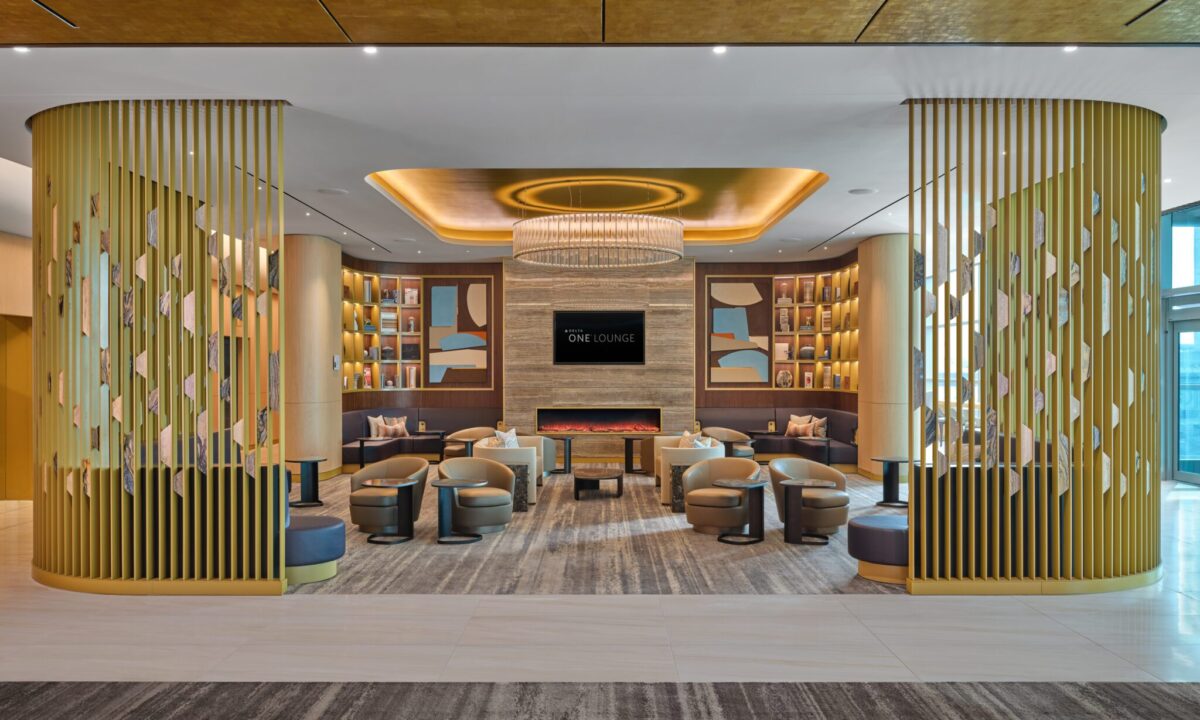Delta’s glow up is real. As someone who writes (and obsesses) about customer experience and luxury, I’ve got to hand it to them. The brand feels crisp: New premium lounges actually deliver, the app works (and works well), and most of their staff seem genuinely proud of what they do. Walk through their new Delta One lounges in LAX or JFK and you can feel it: They’ve cracked the code on attracting that finicky U.S. creative class crowd.
This isn’t just my perception: Three-quarters of their first-class seats are now paid for, not upgrades. Premium tickets are growing faster than economy and are poised to actually overtake regular cabin revenue by 2027. The old-school road warriors? They’re increasingly on the outside of the red velvet rope looking in, as Delta goes all-in on the folks dropping $30K+ a year for Diamond status on a revenue-based model.
Assuming you don’t get stuck on a clunky 767 crossing the U.S., a lot of the product matches this bet: Think proper suites with sliding doors on the newer A350’s. In the U.S. market, they’re playing a different game than competitors, as American races to the bottom and United is stuck in the middle.
Where Delta Falls Short
But – and this is a big but – there’s a major difference between being premium for America and actually competing with the world’s best. Airlines like Qatar and Emirates are in a whole other league.
Delta needs to take a hard look at where they’re falling short, and nowhere is this more obvious than on their long-haul flights.
Here’s an example: I recently flew Delta’s Cape Town to Atlanta route – one of their cash cows, packed with safari-bound travelers ready to spend serious money. On a 15+ hour flight in Delta One, they served a budget, lackluster meal that lacked flavor and any semblance of thought or presentation.
The second in-flight offering if you were feeling peckish? Smoked fish. On a plane. And then a hasty breakfast with a limp, dehydrated croissant.
Even one of the flight attendants pulled me aside to sheepishly admit they were embarrassed by what they’re serving up front on a regular basis. It wasn’t commensurate to what they were charging, and a far cry from the global standard.
And the service itself? Stop me if you’ve seen it on an American carrier before: long tenured crew members who are perfectly nice enough but (i) burned out after a lifetime of flying and (ii) spending most of the flight chatting in the galley, emerging only when it’s time to push the cart through and go through the motions with zero anticipation of what passengers might want.
This wasn’t a one-off. I’ve had similar experiences flying into Tokyo Haneda and other priority long-haul routes. Fellow Delta Diamonds who know their stuff have similar stories.
Delta might be patting themselves on the back after domestic wins and getting cocky, but they need to completely rethink their game on these ultra-long, hyper-profitable routes. Service design, food, all those little touches that matter, need work. And the trendy amenity kit collab du jour isn’t enough. Sure, serving Shake Shack burgers was a clever PR touch that bloggers loved, but another level is required to truly compete on the long flights.
The Big Leagues
Want to see how it’s done? Fly Turkish in business through Istanbul and get some of the most inspired airline food in the world. Check out Qatar or Emirates for service that actually feels intuitive, personalized, and truly premium. Qatar just added caviar to their already stellar Q-Suites experience, because they know how competitive the top actually is.
ANA, Singapore, and even Finnair all distinguish themselves in certain ways, through polish (ANA), end-to-end experience (Singapore), or thoughtful throughlines to their culture (Finnair). The list goes on.
Delta needs to realize that being the best in America isn’t enough. Based on their execution over the past several years, they have a real shot at playing with the big boys, but only if they iron out these wrinkles and inconsistencies in the premium long-haul experience. And right now, while the money’s flowing, is exactly when they should be doing it, pushing themselves to benchmark to a higher level.
Delta staffers need to look past what they’re already offering, and try the premium services others are providing. Doing so can draw inspiration from adjacent areas like hotels, retail and other high-touch experiences. A never-satisfied culture of excellence and striving to bring the outside in will serve them: they need to sign up for a perpetual growth mindset when it comes to paying off the luxury bet they’ve made.

